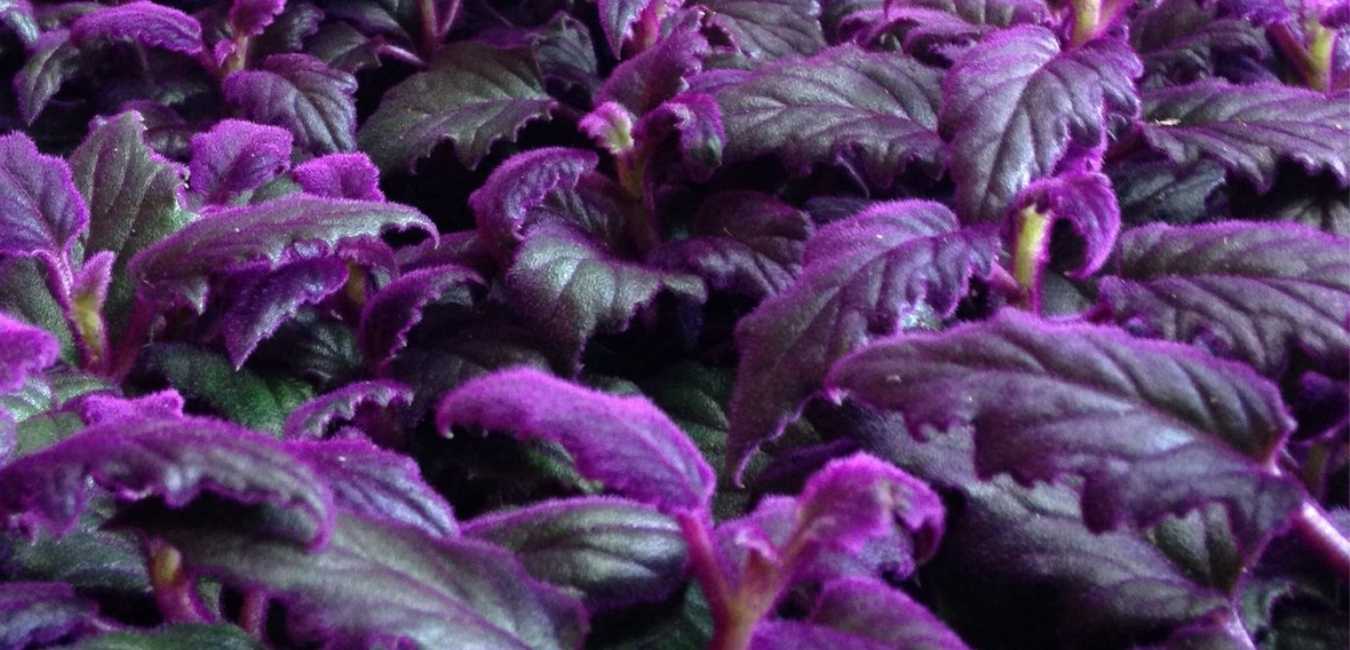Gynura plants or velvet plants are gorgeous and unusual houseplants, showcasing furry leaves in stunning shades of emerald and purple. They are fairly easy to care for and usually grow well in average indoor environments.

VELVET PLANT
Varieties from our listing
Interested to buy a plant from this group?
See what we have available HERE
Below is a general care guide for Velvet Plants which can slightly differ depending on variety.
Light & Temperature
Velvet plant thrives under bright light and will love the sunny windowsill, though they prefer to get some protection from the harsh afternoon sun. The brighter the light, the bolder and richer the foliage colours. On the contrary, too little light can make the hues pale and eventually disappear. For the temperature, they prefer warm conditions.
Watering, Humidity & Misting
Velvet plants appreciate a consistently moist soil and will wilt when the moisture is not enough. Immediately water your plant when it starts to look droopy. It should be able to perk up and recover quickly.
It can tolerate a range of humidity as long as the soil is always damp. In case the environment is too dry, you can provide a tray with pebbles and shallow water to boost humidity or invest in a small humidifier. Avoid misting the plant as its feathery leaves will hold water and it can increase the possibility of fungal infections.
Soil and Repotting
Use a standard houseplant potting mix. Velvet plants are not too fussy in terms of their soil needs.
This plant does very well in space limiting conditions so repotting is not necessary. If you decide to repot your velvet plant, do so with utmost care of the roots as they can be very fragile and susceptible to transplant shock.
Propagation
Propagation is an important aspect of growing velvet plants if you intend to keep them for a long time. As it has a limited lifespan of a couple of years, it is good to propagate them to ensure you always have new, young and vibrant velvet plants.
For simple propagation, cut the end of a stem that is at least a few inches long. Velvet plants propagate well in water. Just put the end of the stem into a glass of water, provide warm environment and wait for roots to grow over a few weeks.
Fertiliser
Velvet plants are hungry plants that likes fertiliser. Use a balanced fertiliser formulated for houseplants. Follow the directions on the label of our Down to Earth. organic plant food.
Toxicity
Velvet plants are non-toxic and is therefore safe around kids and/or pets. While it is not poisonous, it is not recommended to ingest any part of it to avoid allergies.
Possible Issues
Under the right care and conditions, your plant will grow happy and healthy. But here are some issues you may encounter while caring for a Velvet Plant:
Spider mites, aphids, mealybugs, scales and whiteflies - When spotted, wipe away with wet cloth. Another method is to spray neem oil to the plant.
Browning leaves - The two main causes are too much sun or too strong fertiliser. Move your velvet plant away from direct sun and lessen your feeding quantity and/or frequency.
Root rot - This is caused by overwatering and usually goes undetected but visible signs include brown patches on leaves and curled or distorted foliage. Check the roots of the plant, remove the slimy and dark rotted roots, and clean remaining roots with water. Allow the roots to completely dry before repotting. Adjust watering schedule from then on.


- Regular Price
- from $18.00
- Sale Price
- from $18.00
- Regular Price
- Unit Price
- per